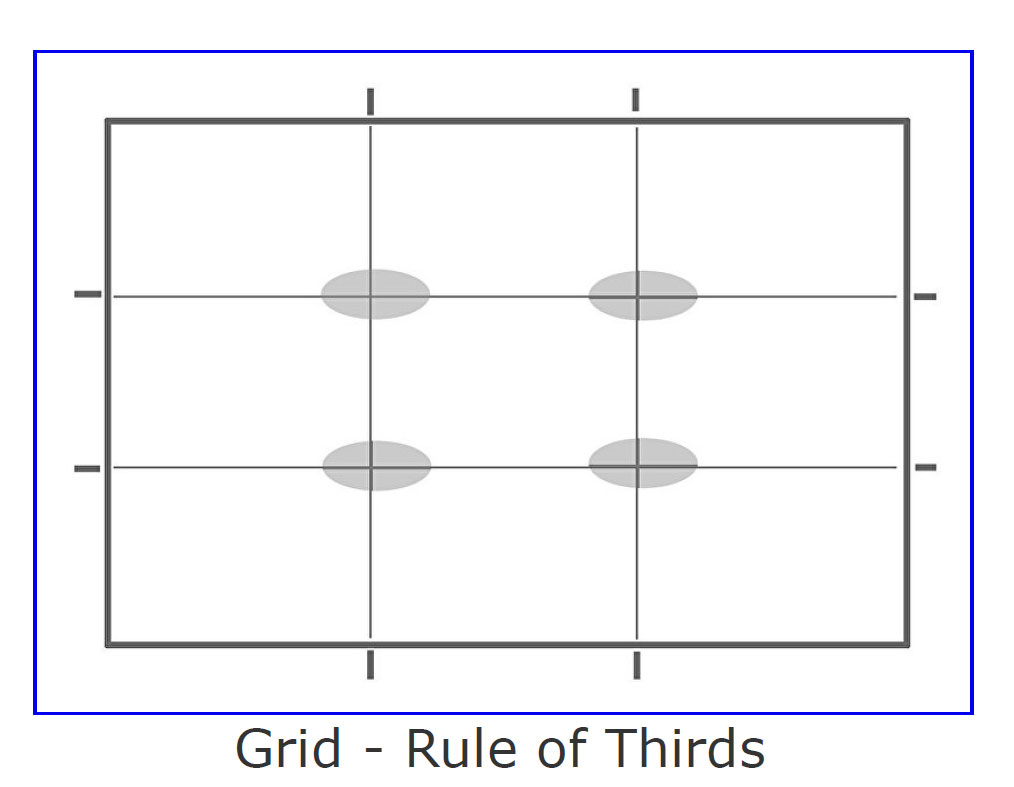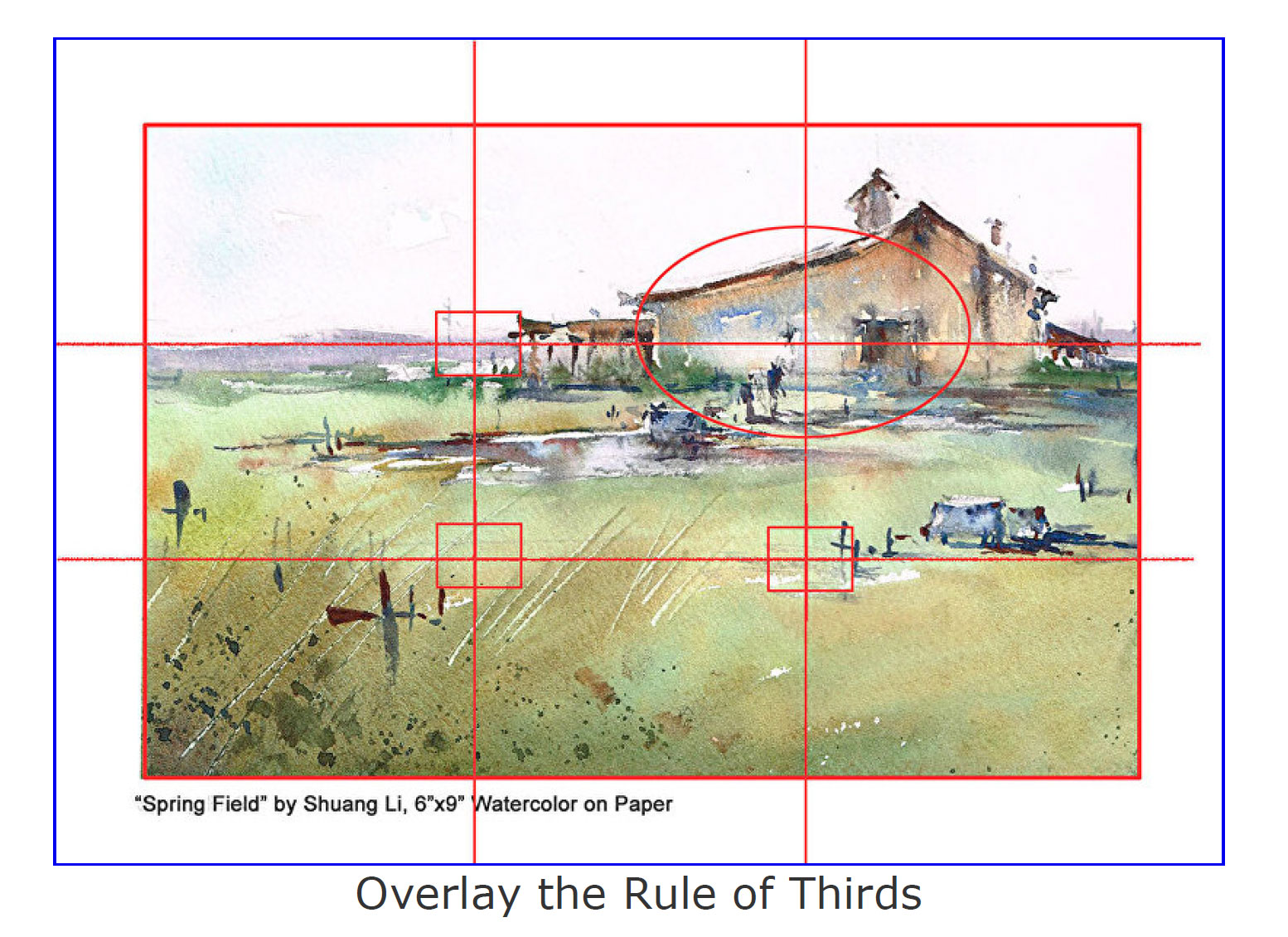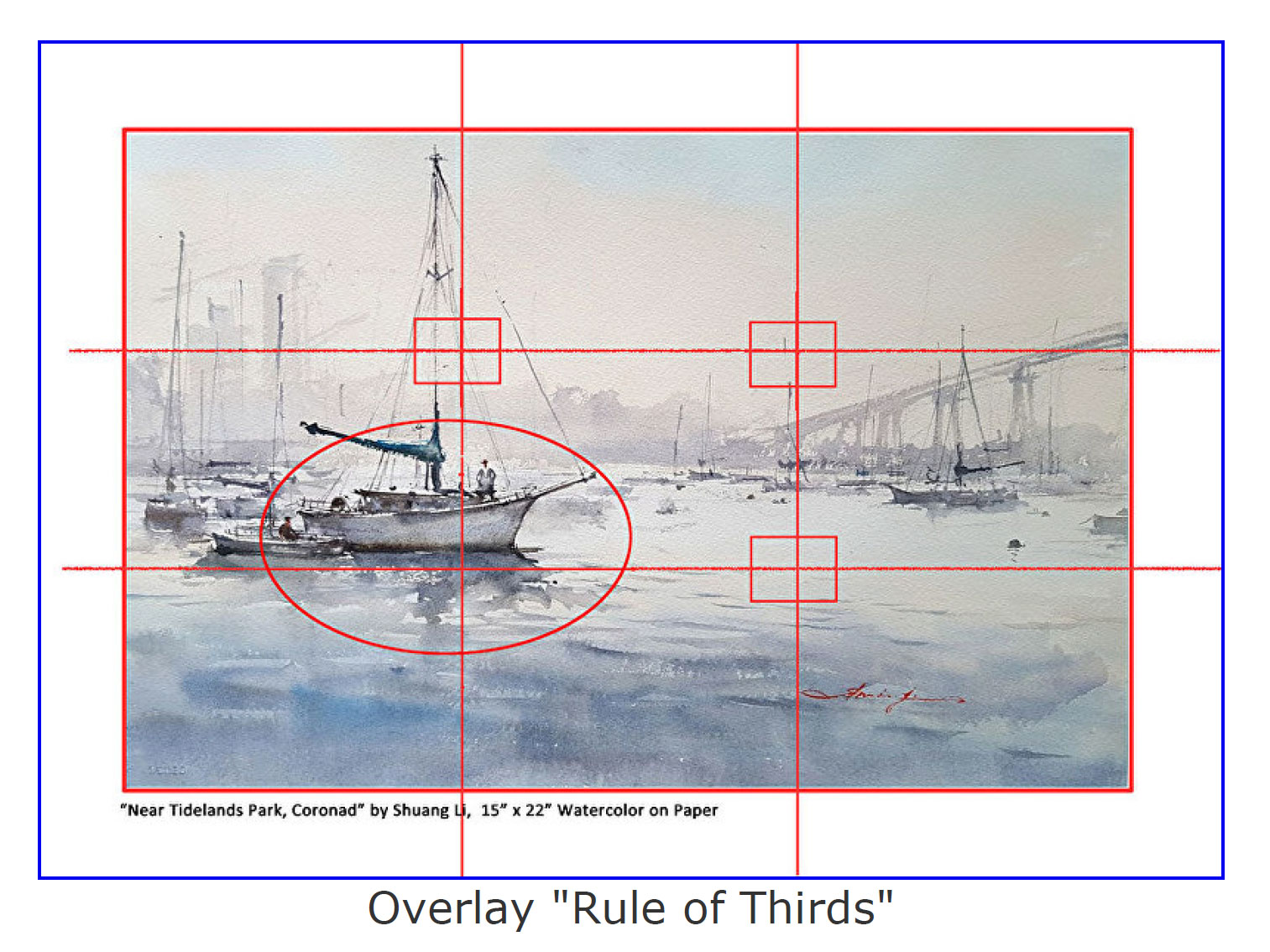
With spring comes the busy season for most plein air painters — and top of mind is often how to make the most of the scenery with good composition. One simple way to do that is to apply the rule of thirds.
Rule of Thirds
There are many ways to compose a painting, but the Rule of Thirds is probably the one that’s most well-known. And it works whether you’re painting a landscape, still life, or a portrait. The basic principle behind the rule is to imagine dividing the full sheet of paper or painting into thirds (both horizontally and vertically), so that you have a grid of nine parts, as illustrated below.

The theory of this rule is that if you place your intended points of interest at one of the intersections, or along the lines, your painting will be more balanced, and your viewer will interact with your painting more naturally.
In learning how to apply this rule to your painting, you may want to ask yourself at least two important questions before you start: What are the points of interests in this painting? Where should I intentionally place them?
The Rule of Thirds in Action

Here you can see that I’ve positioned the old barn, my main point of interest for this painting, at the upper-right intersection of the grid. The distant horizon line, which connects the barn from back to front, also lines up with the top one-third line. This well-balanced composition leads viewers’ eyes to where I wanted them to go – my main points of interest.

Here is another example using a plein air painting I recently made at Tidelands Park, Coronado. You can see that I placed my points of interest — in this case, the largest group of sail boats on the left — at the intersection of the lower left sections. The figures, main masts, and the reflection were positioned along the vertical one-third line on the left. The entire middle ground is taken up the middle one-third grid row. The painting perfectly captures the mood of a calm morning water scene.
Now that you see how the Rule of Thirds works, I encourage you to apply this rule to your next painting and see if it helps your composition. You may even want to experiment with some your own unfavorable paintings, and see how applying the Rule of Thirds to your design can result in a better outcome. I bet you will find something very interesting through this exercise.
Can This Rule Be Broken?
Sure, we all know that rules are meant to be broken. Ignoring this rule does not mean that your paintings are boring or unbalanced. However, as Pablo Picasso said, “Learn the rules like a pro, so you can break them like an artist.” So, this spring and summer, just keep the Rule of Thirds in mind when you paint, either in the studio or out in the field. Once you’ve learned and experimented with Rule of Thirds, you’ll be ready to purposely break it as an artist!
Shuang Li shares her process for painting compelling waterscapes in the DVD, “FEARLESS WATERSCAPES WITH SHUANG LI.”








Definitely needed this reminder 😉 Thanks!!!
Thank you for the tips and inspiration. Now I wish I could find the motivation to get back to painting. Any suggestions?